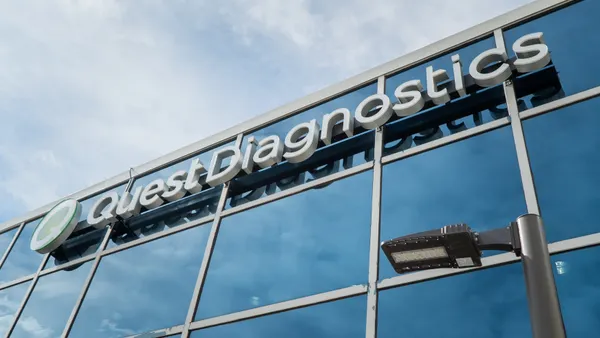Dive Brief:
-
Strong demand for imaging products and services drove Siemens Healthineers to post quarterly results in line with consensus estimates.
-
The 8% increase in imaging revenues on a constant currency basis was large enough to offset unfavorable foreign exchange rates and a drop in profitability at the diagnostic unit.
-
That allowed Siemens Healthineers to reaffirm its 2018 guidance, setting it up to build on the progress it has made since its 4.2 billion euros ($4.9 billion) IPO.
Dive Insight:
Siemens Healthineers has been a stock market success story since it went public in Germany in March. By loosening its ties to its conglomerate parent company, Siemens, the healthcare technology unit raised 4.2 billion euros. Since then, the stock has easily outperformed the benchmark for big German technology companies.
The third quarter posed a challenge for Siemens Healthineers, though. Like other multinationals based in the eurozone, the company faced strong foreign exchange headwinds, threatening its ability to maintain the momentum it has built up in recent months.
These challenges are evident in Siemens Healthineers’ third quarter results. Profits fell 10% year on year. Sales were flat. But this was expected. Siemens Healthineers’ sales came in just above consensus estimates, while its profit fell a fraction short. Orders exceeded expectations, leading Siemens CFO Ralf Thomas to tell investors and reporters he is “pleased with the strong book-to-bill ratio.”
Siemens Healthineers’ imaging unit performed strongest in the third quarter. Management singled out significant increases in demand for molecular imaging, X-ray products and magnetic resonance as the key drivers in the unit’s 8% growth. Imaging sales in the U.S. and Germany grew substantially.
The strong imaging sales mitigated weaker performance at Siemens Healthineers’ diagnostic unit. With Siemens in the middle of rolling out its immunoassay and clinical chemistry analyzer Atellica, costs at the diagnostic unit are rising and sales are yet to take off to compensate for these outlays. That led to a 25% drop in third quarter profits.
If all goes to plan, that weak performance will be a blip on the road for the unit. Siemens Healthineers has now shipped more than 560 Atellica analyzers, putting its rollout on track. When the transition costs fall, these installed analyzers could support an uptick in profits











